Propaganda from the Russo-Japanese War
Artist Kobayashi Kiyochika created a series of prints depicting the Japanese army during the war that lasted from 1904 to 1905.
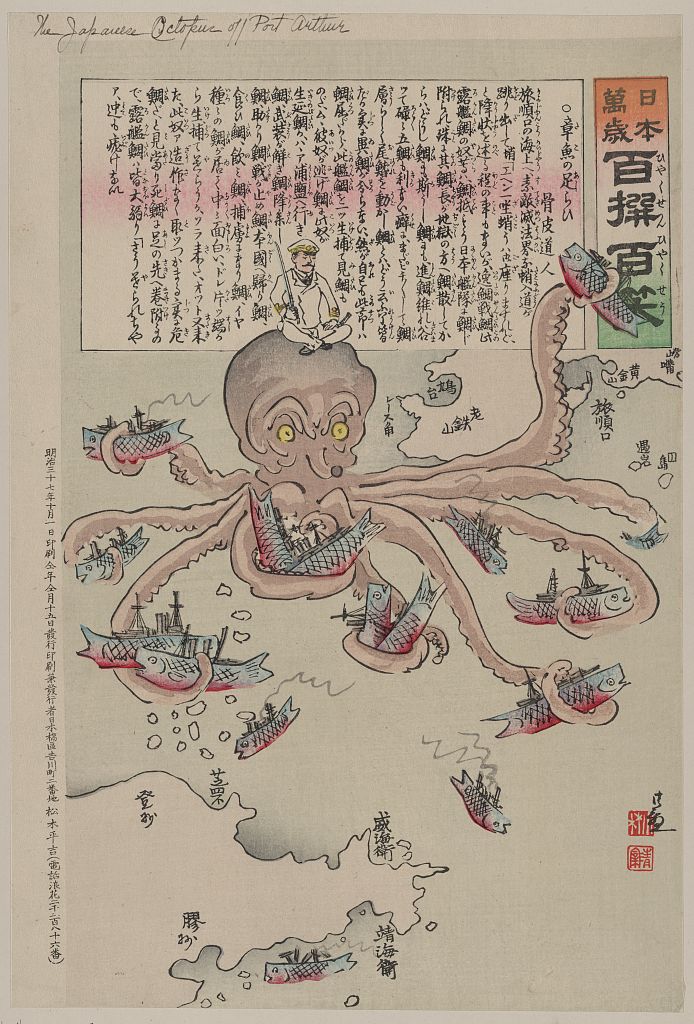
‘Japanese officer sitting on the head of an octopus which has captured ships disguised as fish in its tentacles’ © Public Domain
Russian soldiers frozen to the core and melting before the power of the Japanese army, a Japanese sailor splitting a Russian torpedo boat in half with an axe, Soviet soldiers terrified by figurines of Japanese soldiers dangling from strings… In this series of 86 prints, Kobayashi Kiyochika represents Japanese visual propaganda from the Russo-Japanese war that lasted from 1904 until 1905.
Initially a ukiyo-e artist specialising in landscapes, Kobayashi Kiyochika (1847-1915) later embarked on a career as a political and military caricaturist for the satirical newspaper Marumaru Chinbun. Often caught up in lawsuits due to his anti-government stance, his move towards propaganda posed a challenge. When the war ended, he hung up his propagandist’s paintbrush to return to his first love, painting landscapes—the precious witnesses to Japan’s increasing and rapid modernisation.
Mocking the enemy’s weaknesses
These prints sought to demonstrate to the Japanese people, and indeed to the world, the superiority of the army and the imperial regime over the Russian forces. Tsar Nicolas II’s soldiers are mocked, their military weakness accentuated, their vanity and supposed cowardice exposed. All this was done with one aim: to increase the population’s support of the war effort and of Japanese nationalism.
The Russo-Japanese war also marked the progressive decline of classical propaganda art. Thus, the early 20th century saw the emergence of a growing profession: press photography.
Kobayashi Kiyochika’s work can be viewed on the British Museum website.
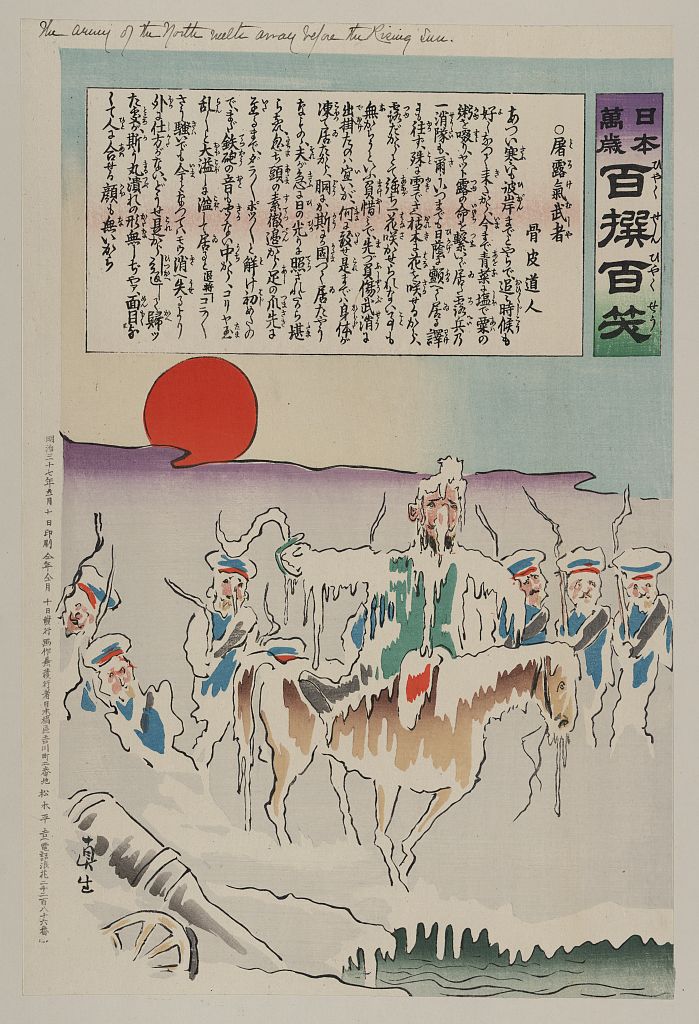
‘Frozen Russian soldiers melting in front of the Japanese army, represented by the Rising Sun’ © Public Domain
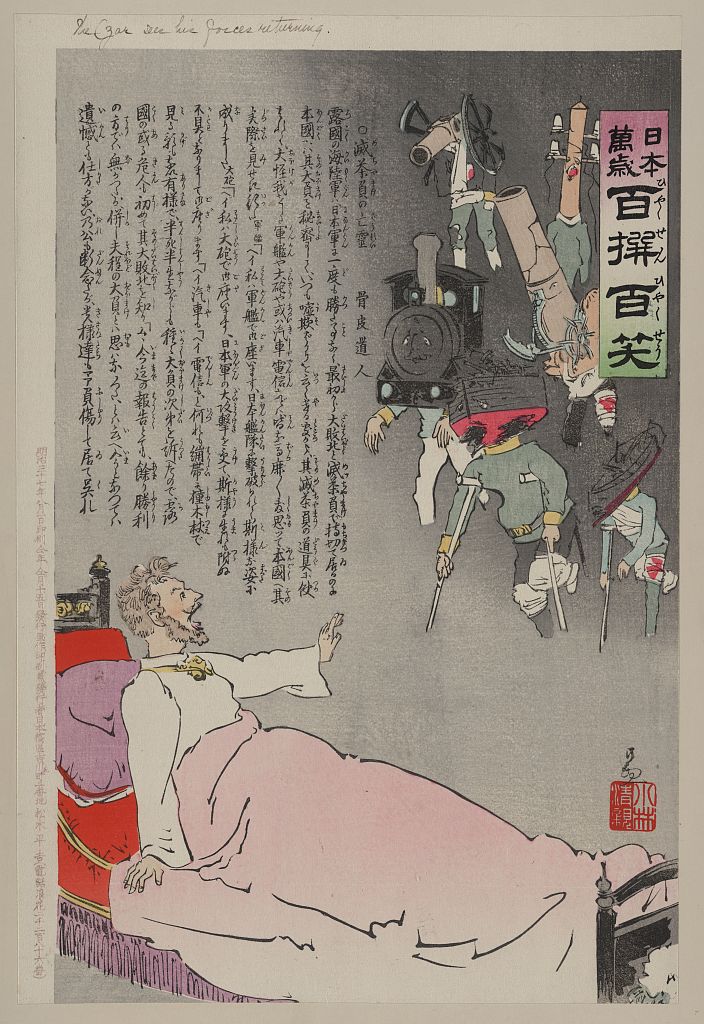
‘Nicholas II waking from a nightmare showing the battered and wounded Russian forces returning from battle with the Japanese’ © Public Domain
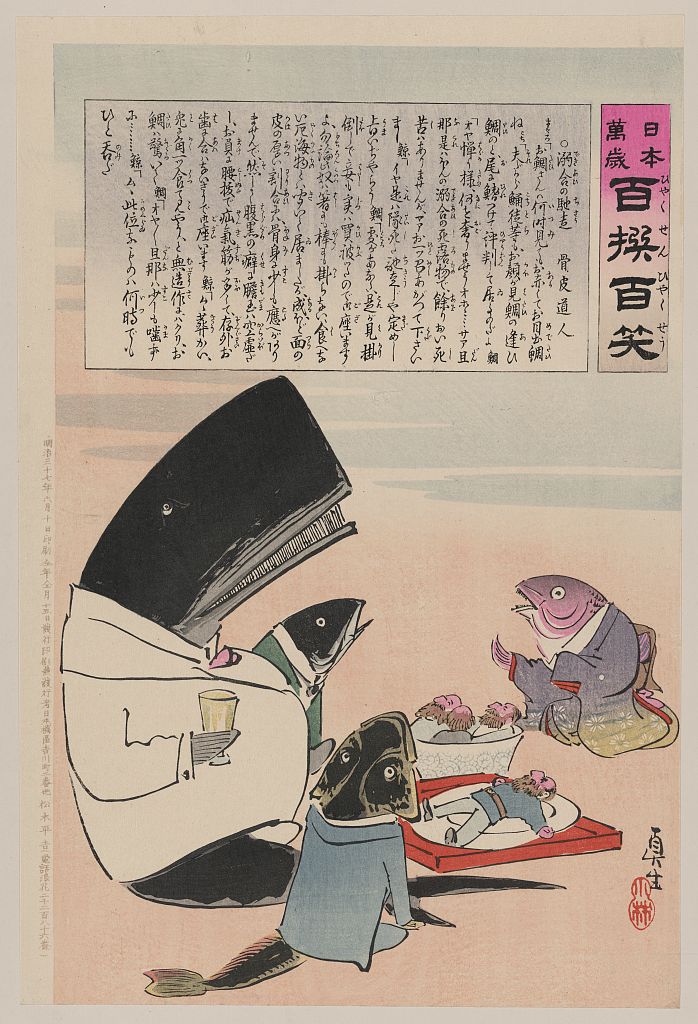
‘A whale and three fish sitting down to a formal dinner of Russian soldiers’ © Public Domain
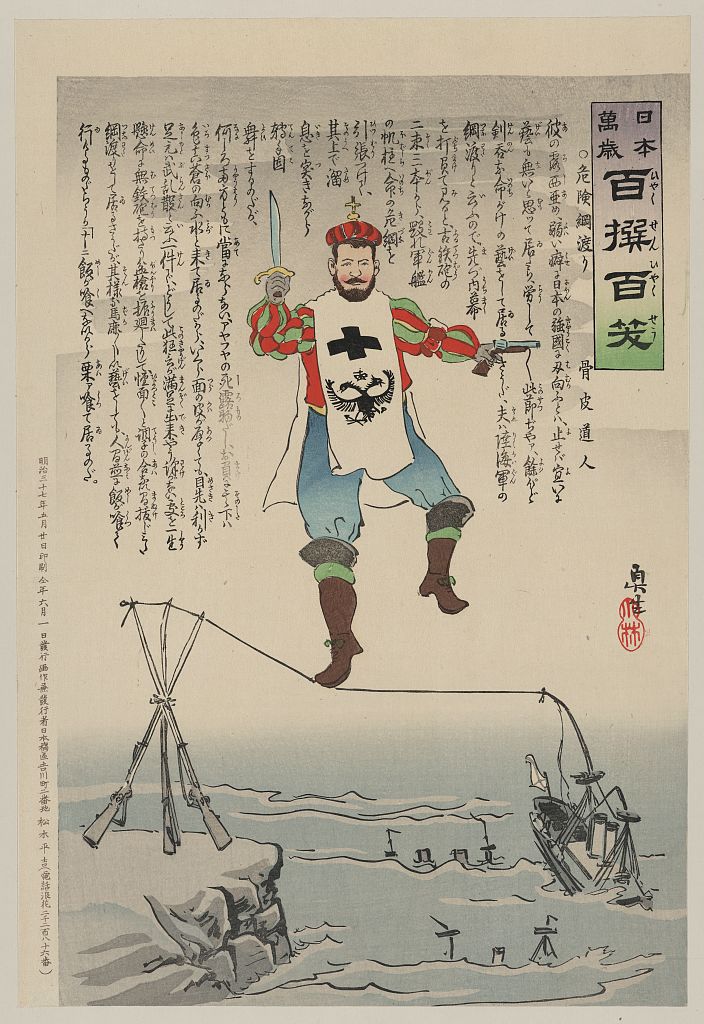
‘Tsar Nicholas II tightrope walking on a line between three rifles on shore and a sinking ship’ © Public Domain
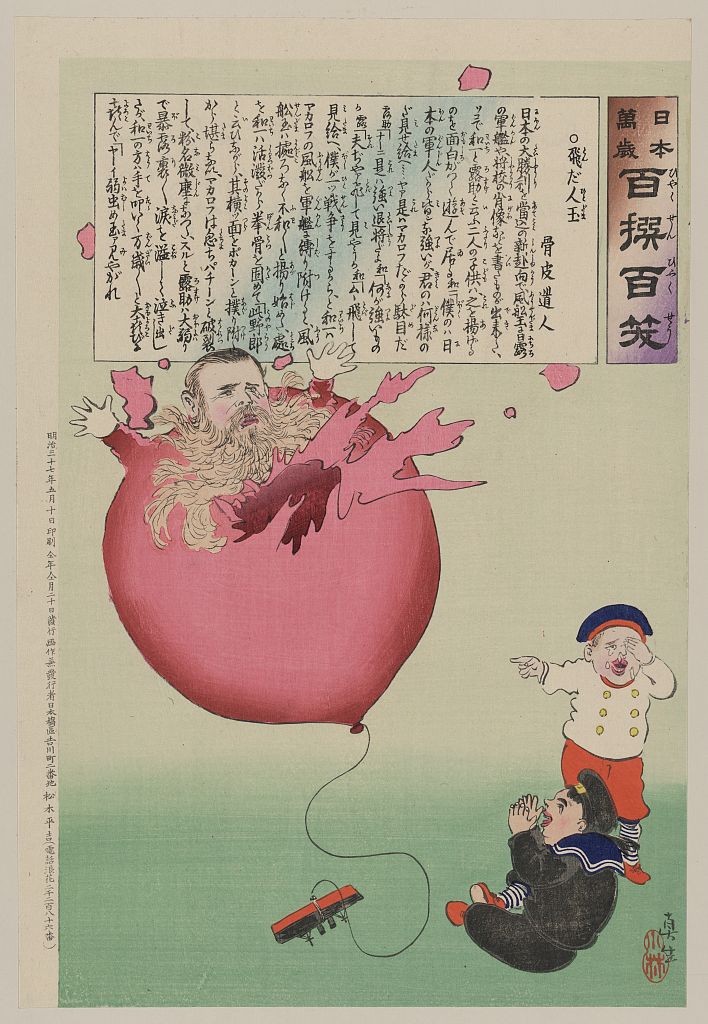
‘Two children wearing sailor outfits are playing with a balloon tethered to a Russian battleship. The balloon has burst, revealing the head of a Russian admiral or tsar, and the battleship has been sunk’ © Public Domain
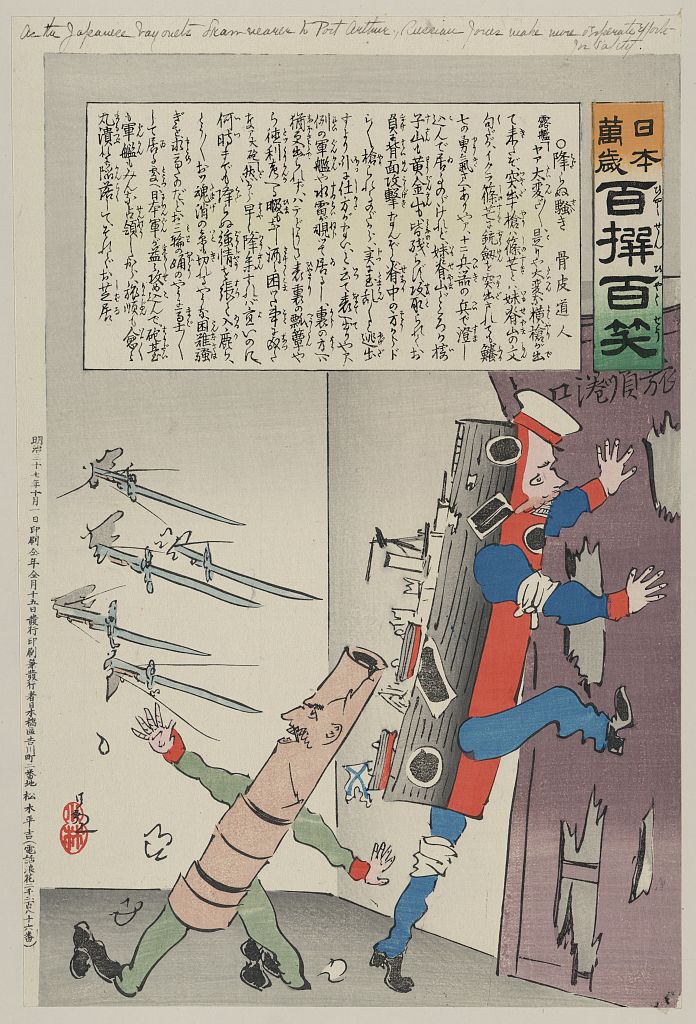
‘Japanese bayonets puncturing a wall and Russian ships attempting to break through the wall on the other side of the room to make their escape’ © Public Domain
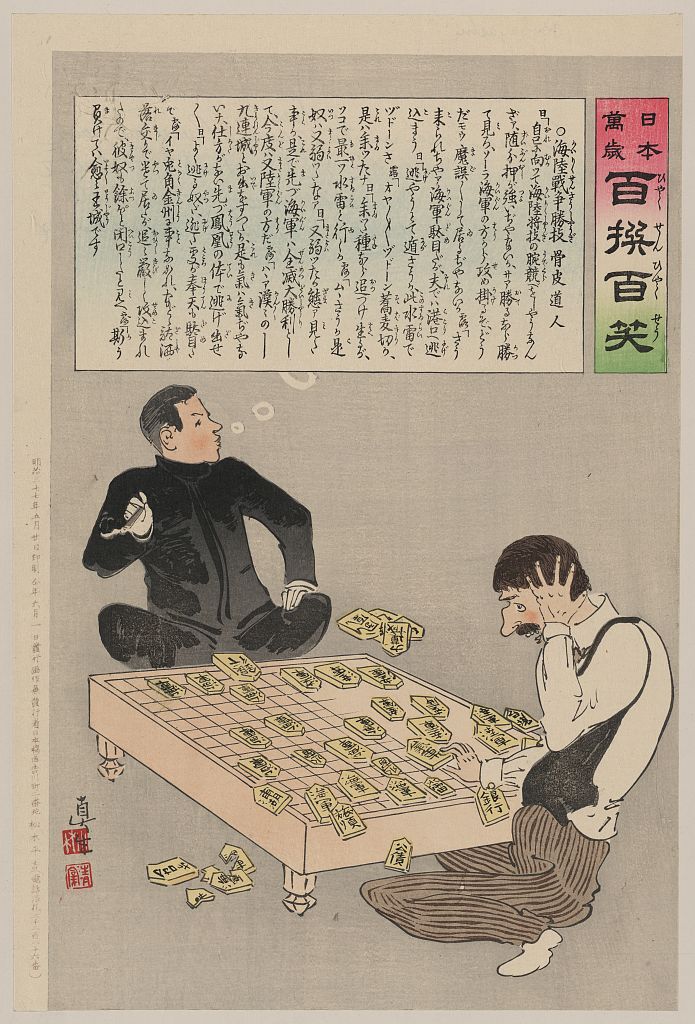
‘A Russian civilian gets upset during a game of dai shogi while his Japanese opponent appears confident of victory’ © Public Domain
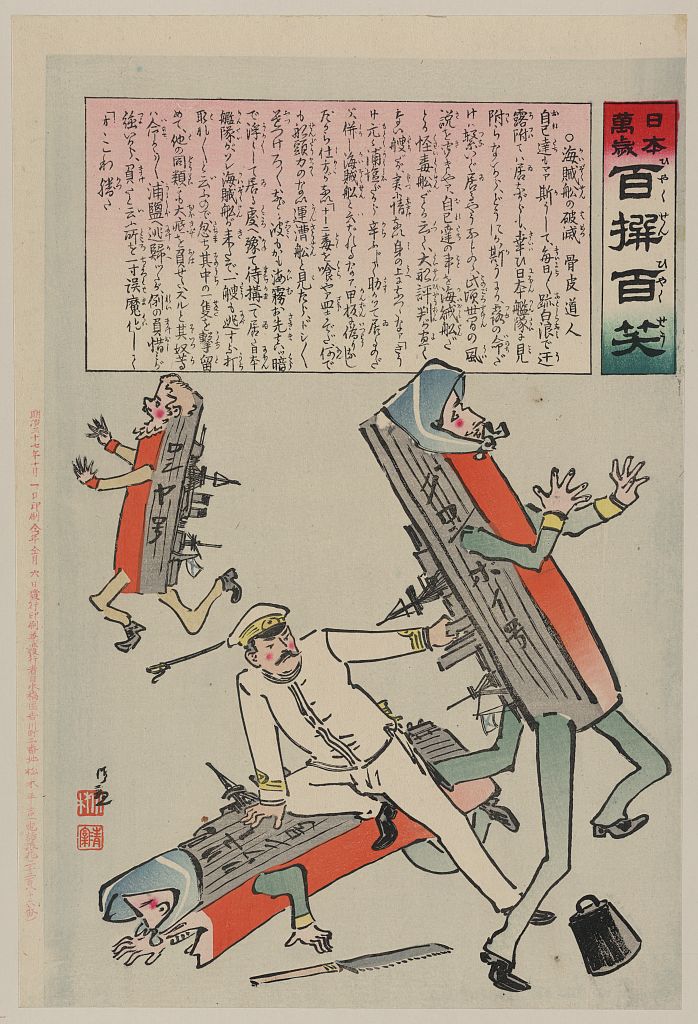
‘A Japanese sailor fights two Russian battleships with his bare hands, while a third ship flees’ © Public Domain
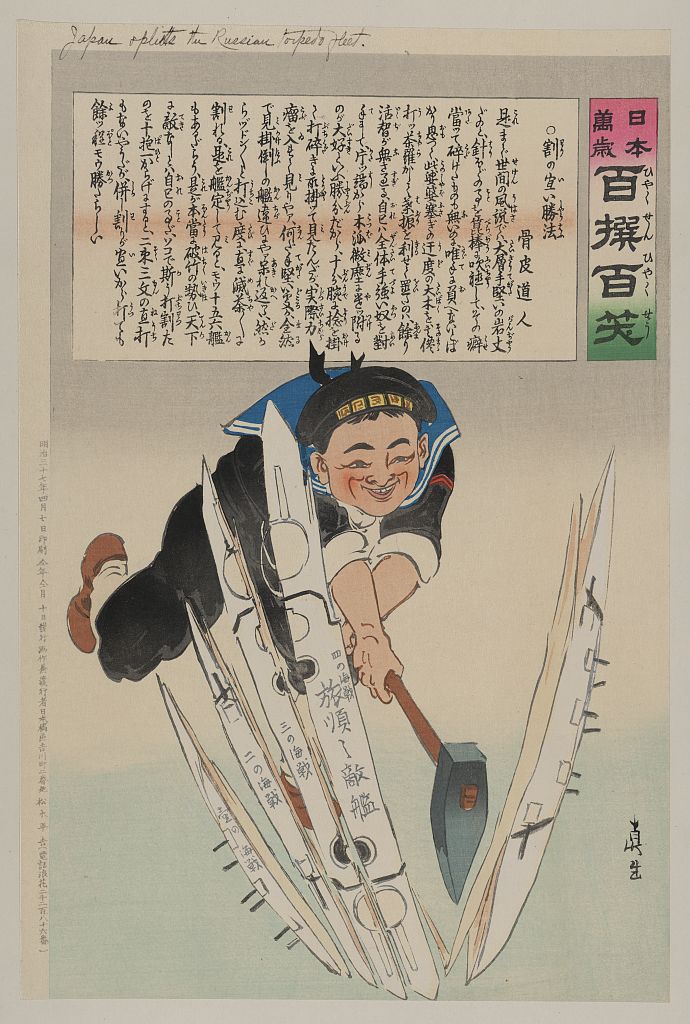
‘Japanese sailor splitting a Russian torpedo boat’ © Public Domain
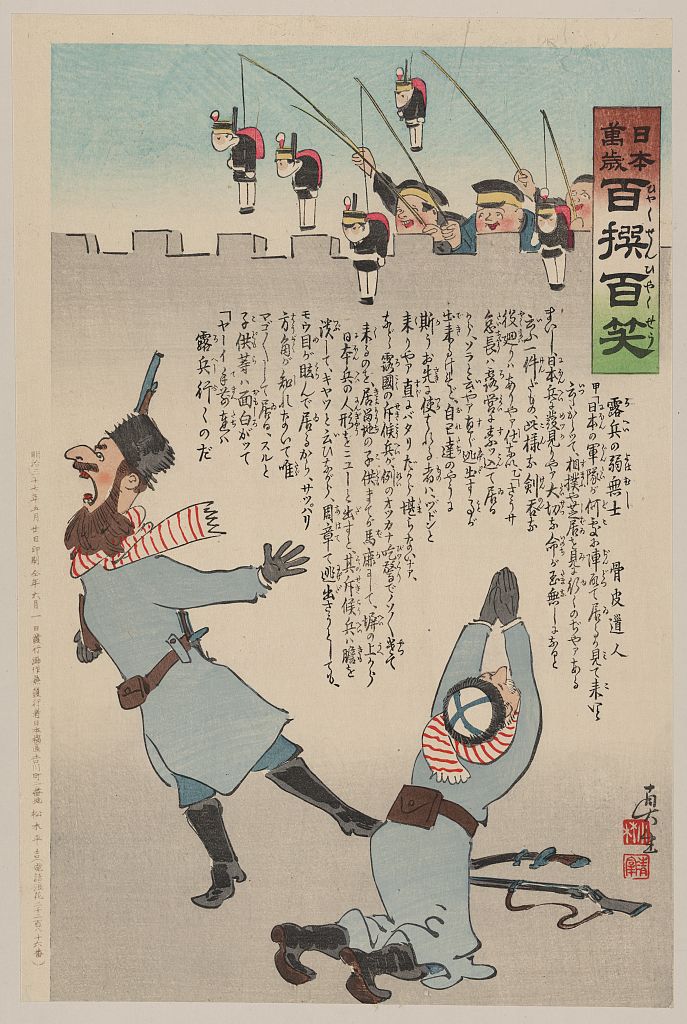
‘Russian soldiers frightened by toy figures of Japanese soldiers hanging by strings’ © Public Domain
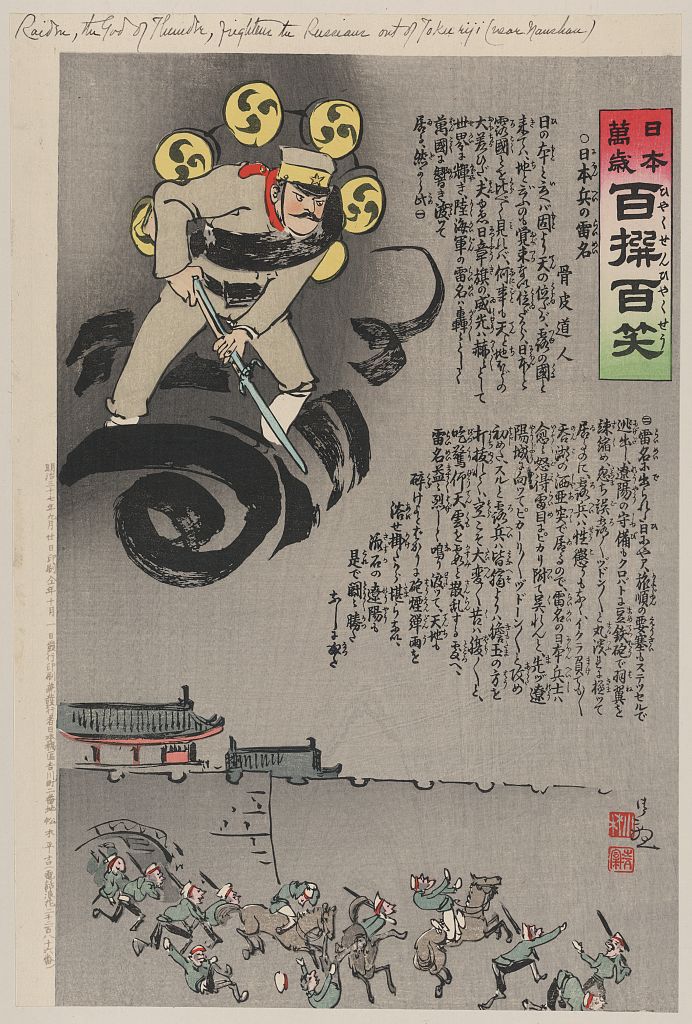
‘Raijin, the Japanese God of Thunder, as Russian soldiers retreat outside the city walls at Tokuriji during the battle of Telissu, June 14-15, 1904’ © Public Domain
TRENDING
-
The Tradition of the Black Eggs of Mount Hakone
In the volcanic valley of Owakudani, curious looking black eggs with beneficial properties are cooked in the sulphurous waters.

-
The Tattoos that Marked the Criminals of the Edo Period
Traditional tattoos were strong signifiers; murderers had head tattoos, while theft might result in an arm tattoo.

-
Gashadokuro, the Legend of the Starving Skeleton
This mythical creature, with a thirst for blood and revenge, has been a fearsome presence in Japanese popular culture for centuries.

-
A Rare Japanese Garden Hidden Within Honen-in Temple in Kyoto
Visible only twice a year, ‘Empty River’, designed by landscape architect Marc Peter Keane, evokes the carbon cycle.

-
‘YUGEN’ at Art Fair Tokyo: Illumination through Obscurity
In this exhibition curated by Tara Londi, eight international artists gave their rendition of the fundamental Japanese aesthetic concept.





